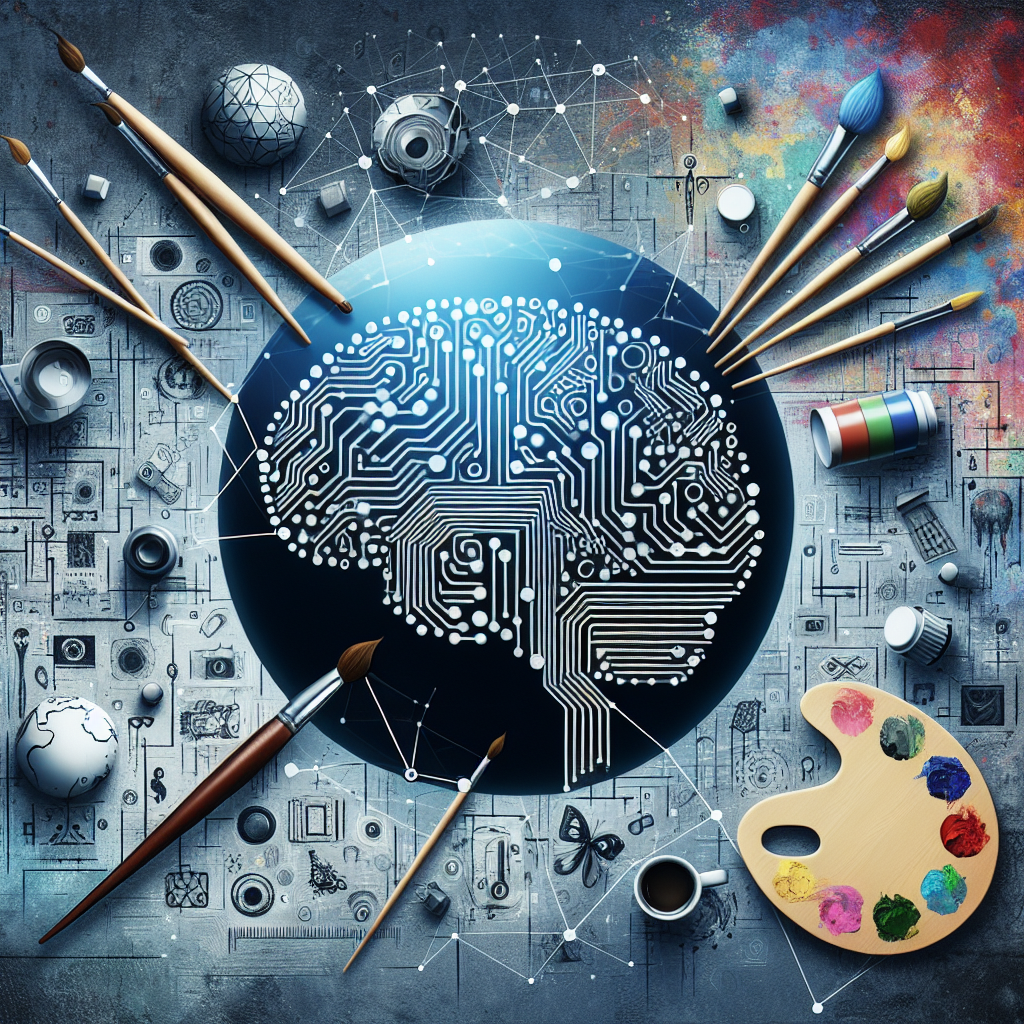Artificial Intelligence (AI) is revolutionizing the way we create and collaborate in the world of art. By leveraging the power of machine learning algorithms, artists can now connect and work together across borders in ways that were previously unimaginable. This new era of creative collaboration is breaking down barriers and opening up exciting new possibilities for artists to push the boundaries of their craft.
One of the key ways in which AI is facilitating creative collaboration is through the use of virtual reality (VR) technology. VR allows artists to enter into a shared digital space where they can work together in real-time, regardless of their physical location. This means that artists from different parts of the world can come together to brainstorm ideas, share feedback, and even work on collaborative projects without ever having to leave their own studios.
Another way in which AI is connecting artists across borders is through the use of online platforms and communities. These platforms provide a space for artists to showcase their work, connect with potential collaborators, and even find opportunities for exhibitions and projects. By leveraging AI algorithms, these platforms can match artists with similar styles and interests, making it easier than ever for creatives to find the perfect collaborator.
AI is also helping artists to overcome language barriers that may have previously hindered collaboration. Translation tools powered by AI can now instantly translate text and speech, allowing artists to communicate effectively with collaborators who speak different languages. This means that artists from around the world can now come together to work on projects without having to worry about language barriers getting in the way.
In addition to facilitating collaboration across borders, AI is also helping artists to push the boundaries of their creativity in new and exciting ways. Machine learning algorithms can analyze vast amounts of data to identify patterns and trends, which can then be used to generate new ideas and spark inspiration. By using AI to explore new possibilities and experiment with different techniques, artists can unlock a whole new world of creative potential.
One of the most exciting developments in AI-powered creative collaboration is the use of generative adversarial networks (GANs). GANs are a type of machine learning model that consists of two neural networks – a generator and a discriminator – that work together to create new content. Artists can use GANs to generate new images, music, and even text, providing a wealth of inspiration for collaborative projects.
Overall, AI is revolutionizing the way artists collaborate and create, connecting creatives across borders and opening up exciting new possibilities for artistic expression. By leveraging the power of machine learning algorithms, artists can now work together in ways that were previously unimaginable, pushing the boundaries of their craft and unlocking a whole new world of creative potential.
FAQs:
Q: How is AI helping artists to collaborate across borders?
A: AI is helping artists to collaborate across borders by providing virtual reality technology, online platforms, and translation tools that make it easier for artists to connect and work together regardless of their physical location or language barriers.
Q: What is generative adversarial networks (GANs) and how are artists using them in creative collaboration?
A: Generative adversarial networks (GANs) are a type of machine learning model that consists of two neural networks – a generator and a discriminator – that work together to create new content. Artists can use GANs to generate new images, music, and text, providing a wealth of inspiration for collaborative projects.
Q: How can artists leverage AI to push the boundaries of their creativity?
A: Artists can leverage AI to push the boundaries of their creativity by using machine learning algorithms to analyze data, identify patterns and trends, and generate new ideas. By experimenting with different techniques and exploring new possibilities, artists can unlock a whole new world of creative potential.
Q: What are some examples of AI-powered creative collaboration projects?
A: Some examples of AI-powered creative collaboration projects include virtual reality collaborations, online platforms that match artists with similar styles and interests, and the use of generative adversarial networks (GANs) to generate new content for collaborative projects.

